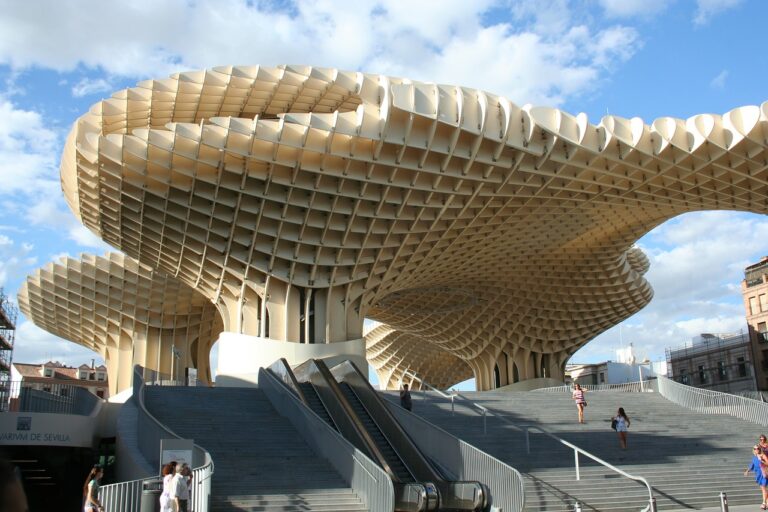Museums in Seville
Museums in Seville
Discovering the Museums of Seville
Seville, a city rich in history and culture, is home to many museums that glimpse its diverse heritage. Seville’s museums cater to a wide range of interests from art and archaeology to flamenco and science. This blog post will guide you through some of the most notable museums in Seville, inviting you to embark on a cultural journey through this vibrant city.
Seville Museum of Fine Arts
The Seville Museum of Fine Arts, located in the Plaza del Museo, is a must-visit for art lovers. Housed in a former convent, this museum boasts an impressive collection of works by Spanish masters such as Murillo, Zurbarán, and Valdés Leal. It’s considered the second most important art gallery in Spain, showcasing the richness of the Sevillen school of painting. The museum’s serene courtyards and beautifully preserved architecture add to the experience, making it a peaceful retreat from the bustling city streets.
Museum of Popular Arts and Traditions
Situated in the Plaza América, the Museum of Popular Arts and Traditions offers a fascinating look at the everyday life of Andalusians throughout history. The museum displays a wide array of artifacts, including traditional costumes, ceramics, and furniture, providing insight into the region’s rich cultural heritage. Its location in the María Luisa Park, amidst grandiose Neo-Mudéjar style buildings, enhances the visit with stunning surroundings.

Flamenco Dance Museum in Seville
The Flamenco Dance Museum, founded by the renowned flamenco dancer Cristina Hoyos, is a vibrant tribute to the art of flamenco. Located in an 18th-century Sevillian palace, the museum offers an interactive journey through the history, styles, and costumes of flamenco dance. Visitors can immerse themselves in flamenco culture with live performances, workshops, and a historical vault showcasing Roman and pre-Roman artifacts. The museum’s dedication to preserving and promoting flamenco makes it a unique cultural landmark in Seville.
Centro Cerámica Triana
The Centro Cerámica Triana, nestled in the historic Triana neighborhood, celebrates Seville’s long-standing tradition of ceramics. The center, located in a former pottery factory, exhibits the process of ceramic making, from clay to the final glazed product. Visitors can explore the history of Triana’s ceramics and see the beautiful tiles that have adorned Sevillen’s architecture for centuries. The museum’s interactive displays and workshops offer a hands-on experience of this traditional craft.
Antiquarium Museum in Seville
The Antiquarium, situated beneath the Metropol Parasol in the Plaza de la Encarnación, provides a fascinating glimpse into Seville’s ancient history. The museum showcases Roman and Moorish ruins discovered during the construction of the Metropol Parasol, offering a unique perspective on the city’s past. The well-preserved mosaics, houses, and streets give visitors a sense of walking through history, making the Antiquarium a captivating stop for history enthusiasts.

Archivo de Indias Museum in Seville
The Archivo de Indias, located between the Seville Cathedral and the Real Alcázar, houses an invaluable collection of documents related to the Spanish Empire in the Americas. This UNESCO World Heritage Site is not only an architectural marvel but also a treasure trove for researchers and history buffs. The archive’s extensive collection of maps, drawings, and manuscripts provides a comprehensive look at Spain’s colonial endeavors and their impact on the world.
Casa de la Ciencia Museum in Seville
The Casa de la Ciencia, or House of Science, offers a family-friendly exploration of the natural world. Located in the Parque de María Luisa, this museum features interactive exhibits on a variety of scientific topics, from astronomy to biodiversity. The museum’s planetarium and temporary exhibitions make science accessible and engaging for visitors of all ages, promoting curiosity and learning.
Palace of the Countess of Lebrija
The Palace of the Countess of Lebrija, a lesser-known museum in Seville, is a stunning example of a private collection turned public. This 16th-century palace is filled with Roman mosaics, Moorish tiles, and Renaissance art, offering a unique blend of cultural influences. The palace’s richly decorated rooms and courtyards provide a glimpse into the opulent lifestyle of Sevillen nobility.
Conclusion about Museums in Seville
Seville’s museums are gateways to understanding the city’s multifaceted history and culture. From the masterpieces of the Seville Museum of Fine Arts to the interactive exhibits of the Casa de la Ciencia, each museum offers a unique perspective on Seville’s heritage. Whether you’re drawn to the passionate rhythms of flamenco, the intricate beauty of ceramics, or the ancient ruins beneath the city, Seville’s museums invite you to explore and discover. So, pack your curiosity and embark on a cultural journey through the museums of Seville, where history and art come alive.
